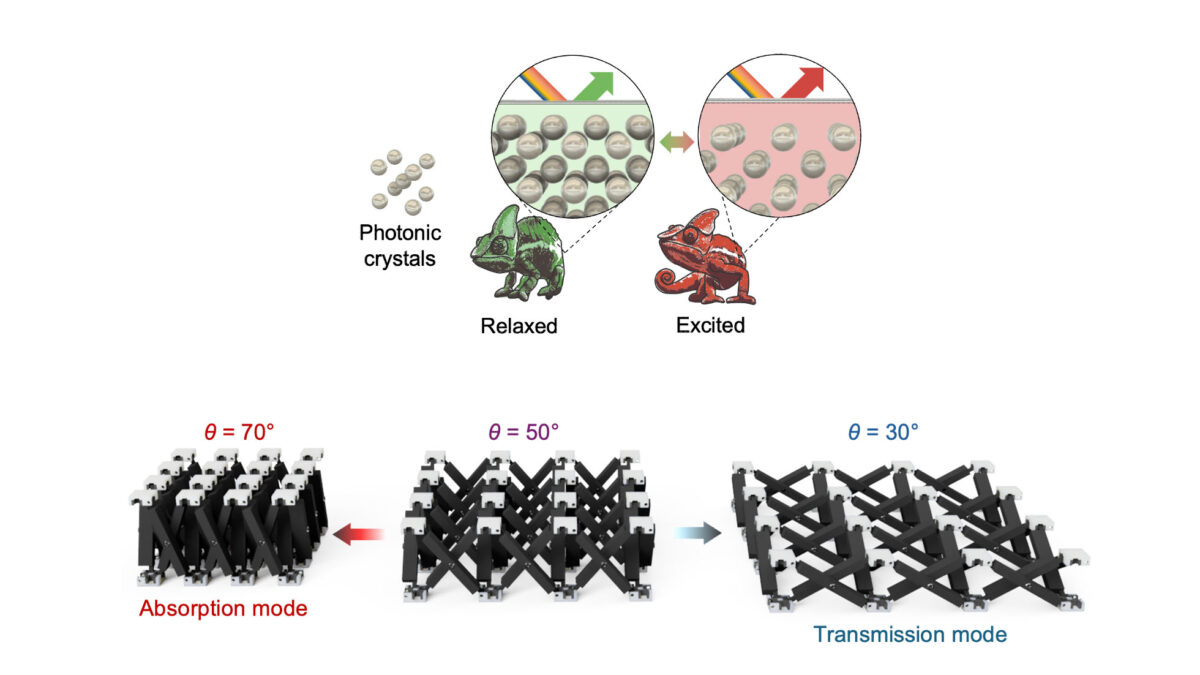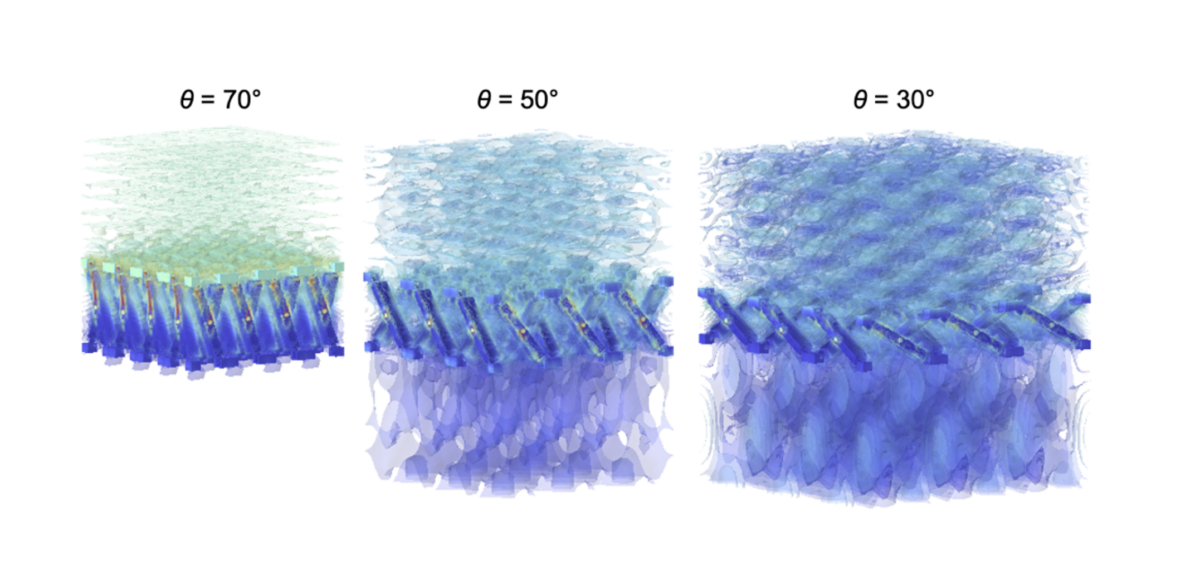 The chameleon is the inspiration behind a new and innovative electromagnetic material. (Photo by bayshev/iStock.com)
The chameleon is the inspiration behind a new and innovative electromagnetic material. (Photo by bayshev/iStock.com)New electromagnetic material draws inspiration from the color-shifting chameleon
Talk about inspo. The chameleon, a lizard known for its color-changing skin, is the inspiration behind a new electromagnetic material that could someday make vehicles and aircraft “invisible” to radar.
As reported today in the journal Science Advances, a team of UC Berkeley engineers has developed a tunable metamaterial microwave absorber that can switch between absorbing, transmitting or reflecting microwaves on demand by mimicking the chameleon’s color-changing mechanism.
“A key discovery was the ability to achieve both broadband absorption and high transmission in a single structure, offering adaptability in dynamic environments,” said Grace Gu, principal investigator of the study and assistant professor of mechanical engineering. “This flexibility has wide-ranging applications, from stealth technology to advanced communication systems and energy harvesting.”
According to Gu, creating materials that can efficiently absorb electromagnetic waves, like radar or microwaves, has been a longstanding technological challenge. “Existing materials typically have a ‘one-size-fits-all’ design,” she said. “They are fixed in their response after they’re made, which limits their use in dynamic environments where adaptability is crucial.”
Seeking to create a material that could dynamically change how it interacts with electromagnetic waves, the researchers took inspiration from the chameleon. The sticky-tongued reptile changes color by adjusting the spacing between photonic crystals in its skin to modulate light reflection.
Gu and her team worked to adapt a similar tuning mechanism to their metamaterial design. The result was a crisscross truss structure that can mechanically transform to control its electromagnetic properties. By collapsing or expanding — a synchronized movement enabled by the interlinked system of trusses — the metamaterial can vary its electromagnetic response from broadband absorption to transmission mode.

Image of the chameleon’s color-changing mechanism (above) and the bioinspired tunable metamaterial microwave absorber (below). (Image courtesy of the researchers)
Using machine learning and genetic algorithms, the researchers optimized the structure’s design for specific, targeted electromagnetic responses, achieving a level of programmability. They then fabricated the structure using 3D printing and tested its ability to switch between absorbing and transmitting microwaves.
“In its collapsed form, the structure absorbs over 90% of microwaves in the 4–18 GHz range, effectively rendering it invisible to radar and achieving stealth,” said Daniel Lim, postdoctoral researcher and first author of the study. “When expanded, it allows up to 24.2% signal transmission, enabling communication when needed.”

Diagram demonstrates tuning of electromagnetic waves (microwaves) through structural transformation of the metamaterial. (Image courtesy of the researchers)
According to Lim, this bioinspired electromagnetic material has the potential to enhance technologies in a broad range of fields, including defense, wireless communications, energy and smart infrastructure.
“In defense applications, this tunable metamaterial could be used to create vehicles or aircraft that become ‘invisible’ to radar when needed,” said Lim. “At the same time, it can allow communication signals to pass through when required, providing both stealth and connectivity in a single system.”
The material also could be used to create smart windows that switch between blocking and transmitting signals, improving privacy and communication security. In addition, Gu envisions it being used to improve the efficiency of electromagnetic energy harvesting systems that help power sensors and batteries.
“The tunable nature of the design allows it to adapt to changing needs, providing a versatile solution for electromagnetic wave management,” said Gu.

Illustration of the mechanical actuation and shifting electromagnetic response of the arrayed structure. (Image courtesy of the researchers)
Co-authors of this study include Alberto Ibarra and Jiyoung Jung from the Department of Mechanical Engineering at UC Berkeley, and Jeongwoo Lee and Wonjoon Choi from the School of Mechanical Engineering at Korea University, Seoul.
This research was supported by the Bakar Foundation, Alfred P. Sloan Foundation, National Science Foundation ACCESS supercomputing program and UC Berkeley’s Molecular Graphics and Computation Facility.